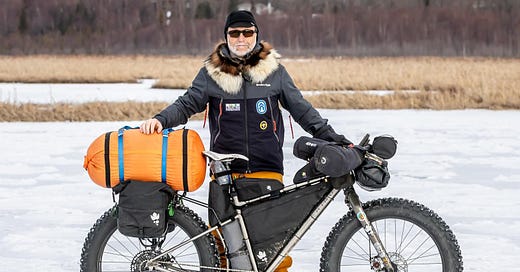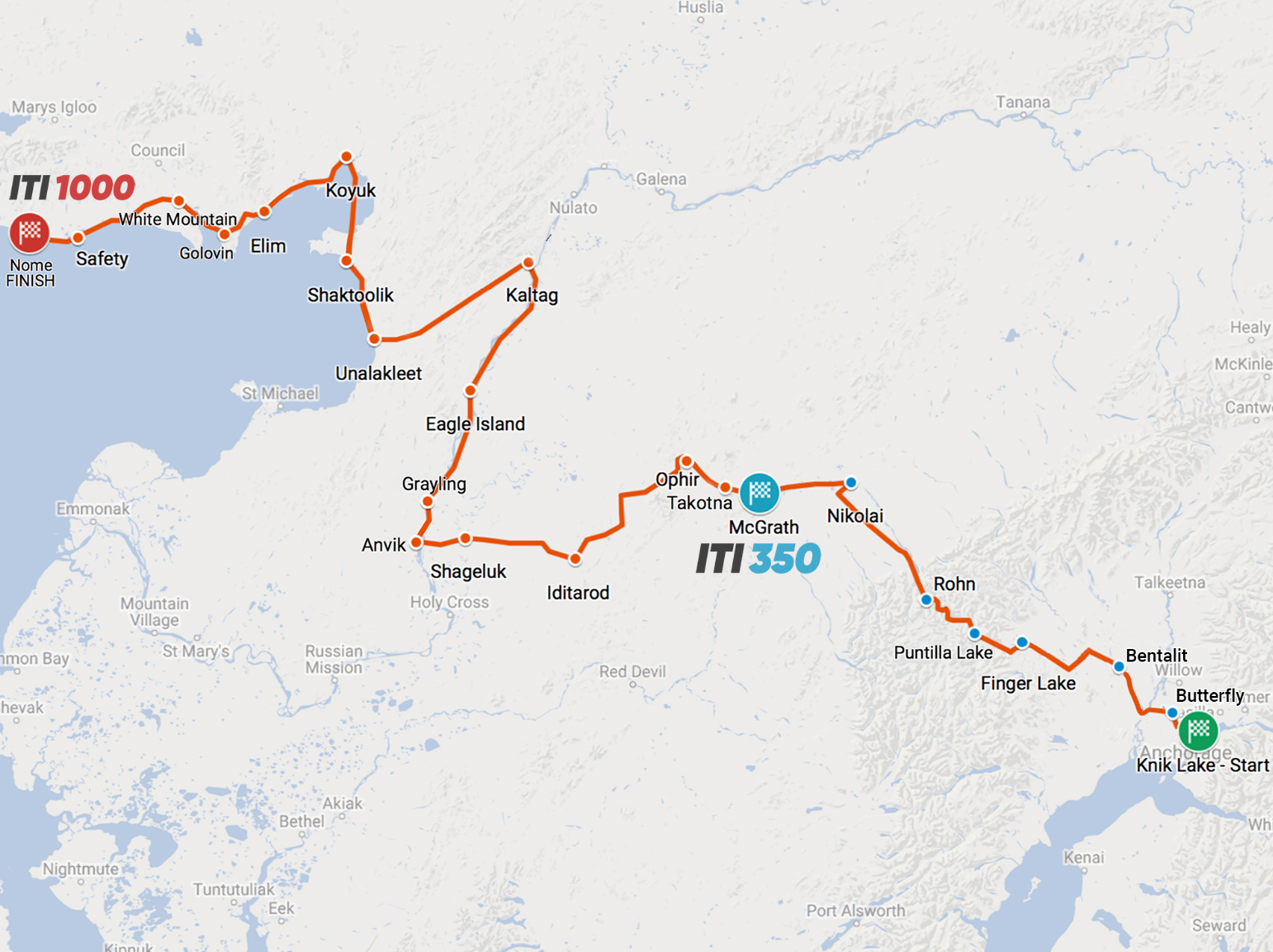Athlete spotlight—Cyclist Willy Mulonia takes on his 8th Iditarod Trail Invitational
The 1000-mile ultramarathon began Sunday
USBC-sponsored athlete Willy Mulonia embarked on his 8th Iditarod Trail Invitational this past Sunday.
The grueling 1000-mile race follows the historic Iditarod Trail and continues all the way to the Bering Sea, ending at the city of Nome.
Track Willy’s live progress—at the time of this writing, he’s completed just over 300 miles.
“I’m ready, yes,” Willy told us over a call soon after he arrived in Alaska last week. Just a few days before the start of the race, Willy is feeling positive but philosophical, as he explains his mindset, his English topped with a dash of charming Italian flavor.
“There are two different ways to feel ready—physically and mentally. Physically, I don’t necessarily feel ready. But the lack of physical readiness is compensated with experience, with confidence, and also with the awareness to be conscious and present. Then, whatever happens will be the result of the choices I will make along the journey.”
“Over all these years, I came to understand that Alaska is not a dangerous place. I’m what’s dangerous in Alaska—if I don’t know what I’m doing. Because if you know the circumstances, if you know how to move with the people, if you know what your expectation is for help—and my expectation is zero—then everything you receive is like a gift. The most dangerous thing in Alaska is me.”
Willy first fell in love with Alaska when he arrived in 1999 for the truncated 350-mile version of the race.
“Back in 1999, we weren’t using fatbikes yet. Imagine trying to ride in these conditions with a normal mountain bike.”
Upon crossing the finish line, he “started dreaming about the 1000.”
But he soon experienced those aforementioned dangers—himself—a year later in 2000 during a dramatic accident while crossing the Alaskan range that could have ended his life. And as is often the case, the long lasting effects weren’t physical. It was the fear.
“I was really scared—every time I thought about being back in Alaska—I was really worried, really scared.”
Willy started cycling around 1990 after suffering from a knee injury. His doctor urged him to start riding as a way to strengthen the muscles around the damaged joint. His impression of the activity then wasn’t the best.
“I remember back when I was at university. My friends were riding at home, they were watching the Giro [a historic multi-stage bike race in Italy]. And in my mind, I was thinking, how is it possible for something to be so boring?”
“But then in 1990, I started to ride, and I haven’t stopped yet. It was love at first sight.”
As Willy describes it, the bicycle became an instrument for self discovery.
“There was something inside me that I never thought I had. I began to feel my potential.”

Indeed, his accident in Alaska would prove to be a seminal moment in that ongoing path toward self discovery.
“In 2000, when I almost died—in actuality, that was an opportunity. I understood once I was back home. I felt this strong feeling around my potential death—that if I was dying in that moment, I was dying a sad person. I knew I had to keep going, like jumping into the darkness. At the moment, it wasn’t clear how I wanted to keep going, but I knew it was the only option.”
“So I quit my job, I broke up from a relationship, and I took my bike and said, OK, I will take my bike on a pilgrimage of sorts. I will ride my bike as a sort of thank you to Alaska from the farthest way possible that land permits. In Spain, we have ‘The Way,’ the Camino de Santiago”. So I said, OK, my pilgrimage will be from Patagonia, from Ushuaia to Prudhoe Bay on the northern coast of Alaska.
“And that journey has been the way in which I discovered how I would like to live my life. And from there, every day, I began building a little piece of faith, with a lot of care and with a lot of trust, to be honest with myself about my purpose.”
Willy’s pilgrimage would eventually take him nearly two years to complete.
And it would take over another 15 years for him to finally confront his fears. “In 2018, I came back again [to the Iditarod Trail Invitational], and I started again to build the dream. I tried in 2019 by myself and got about half way.
“I know the route until McGrath, but what is going on after McGrath, the brain allows you to imagine something really catastrophic and dramatic. 95 percent of the time, the reality is way easier than what our brain told us. I discover, ‘it’s not so dramatic, after all.’”
Then in 2020, Willy can just about taste the finish when disaster strikes.
“In 2020, I was 200 miles from the finish lines and just remember this crazy feeling building up because to finish in Nome was something that I had been dreaming of for over 20 years”
COVID had descended upon the planet and the organizers were forced to call off the race.
“I was in shock.”
Undeterred, Willy would return in 2023 to complete the race and finally reach Nome.
“What I’ve learned in Alaska, I’ve been able to translate and use in my life, just the normal day to day life. Life is tough enough to let you be ready to manage what is going on in Alaska. Compared to life, Alaska is not so tough. Your life, day to day, can be really, really tough.”
“But it’s much easier to manage if you are present—that you understand that what happened is the result of your choices, both on the day to day life side as well as the adventure side. You must be dictated by your purpose and not your emotions. When I decide to reach a goal, if that goal is something that is core and with accordance with my purpose, that helps me to keep going, to move past the emotions that can arise.”
“Imagine one day, you wake up and you feel sad or tired or angry for whatever reason. And because of those emotions, you don’t keep going to follow your purpose, your goal.”
“No way.”
“Follow your purpose and you will meet your emotions.”
Willy expects to reach Nome in about 20 or so days. Track his progress here and follow his journey (and purpose) on Instagram.






